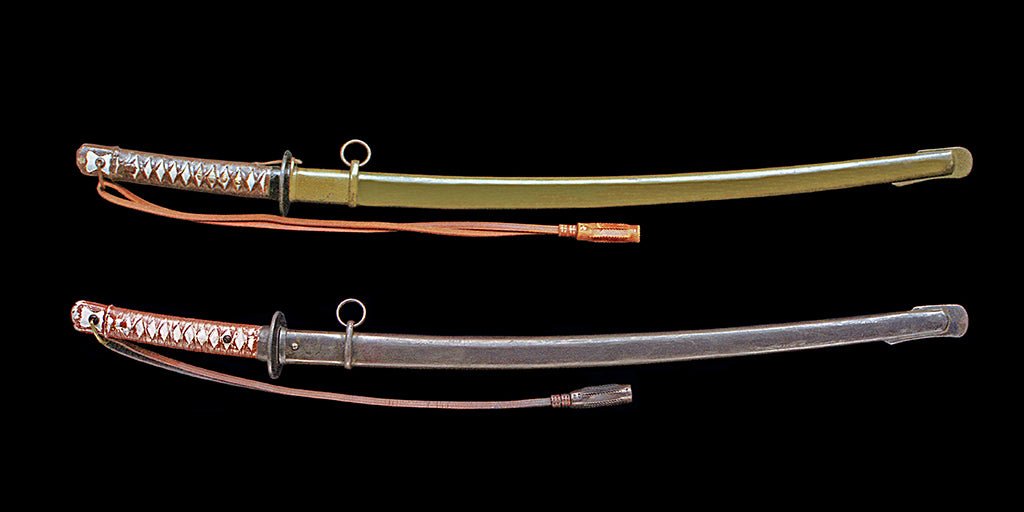The Iron Proof of the Russo Japanese War: The Japanese Army's 203 Command Sword

In the Russo Japanese War, the most famous battle was the Battle of 203 Heights, the commanding heights on the western front of Lushun. The Japanese army continuously engaged in suicidal attacks and fierce attacks to capture the 203 Heights held by the Russian army, ultimately occupying the 203 Heights. This battle reflects the excessive militarism of Japanese militarism, at the cost of ruins and the death of 100000 Japanese soldiers.
In the Battle of Heights 203, the Japanese commander used a Saber 203 command sword, which was mainly used for assassination rather than chopping. What is the historical origin and shape of this sword? Let's start with Japan's "Meiji Restoration".

The Meiji Restoration led Japan onto a path of militarism, with its Saber form blending European style. In 1860, Japan received the impact of Western capitalist industrial civilization and carried out a top-down, capitalist reform movement. This reform of learning European and American technology and culture, vigorously developing the economy and education, is known as the "Meiji Restoration". The Meiji Restoration not only propelled Japan onto the path of becoming a world economic powerhouse, but also embarked on a militaristic path of external expansion and aggression.
In the 18th year of the Meiji era (1885), German officers represented by Major Michael went to teach at the Japanese Army University, and the tactics and military tactics of the Japanese Army were henceforth under the guidance of Germany.
The Japanese army's sabers were also undergoing changes. They were equipped with a large number of European style sabers, but soon discovered that these European sabers were not suitable for hand to hand combat, so they began to improve the sabers. In the 19th year of the Meiji era, Japan established a unified system for sabers. The SAYA and hilt were in European style, and the blade could be freely chosen. The manufacturing method of the blade still retained the Hamon craftsmanship of the Japanese samurai sword. Simply put, Hamon is the process of wrapping the blade with specially made soil, exposing only the blade, and then undergoing quenching treatment.
Japan is a country lacking resources. Since the Edo period, it has been struggling with the lack of suitable fuel for forging samurai swords on the island, and can only be burned with pine charcoal. In the absence of sustained high temperatures, Japanese craftsmen summarized the Hamon process technology. After Hamon treatment, the samurai sword body naturally bends after quenching, which conforms to mechanical principles when waved in the air.
Due to the fact that the Japanese military only established a unified system for SAYA and hilt, and the blade could be freely chosen by the user, some officers from noble backgrounds installed their ancestral famous swords with standard SAYA and hilt, and brought them to the battlefield for use. Those from poor families could only use cheap mechanism blades.

The Russo Japanese War and the "Battle of 203 Heights"
In the famous battle of "203 Heights Competition" on the western front of Lushun, Japanese commanders used a command sword that had advantages in close combat. As this command sword had no standardized name, it was temporarily referred to as the 203 command sword for convenience.
The Form and Reproduction of the 203 Commanding Sword
The blade of the 203 Command Sword is relatively straight, slightly curved, and has a longer Hi machined on it. Its main function is to stab, not chop. Its handle is long and suitable for both hands to hold. It is mostly wrapped in Stingray leather or made of tortoiseshell material, and wrapped with yellow metal wire. The European yellow hand guard features hollowed out decorations, while the decoration features Japanese style cherry blossom and cherry blossom leaf patterns. The European style SAYA is made of stainless steel, with one or two hanging rings on the outside for wearing the 203 Command Sword at the waist.



Leave a comment
This site is protected by hCaptcha and the hCaptcha Privacy Policy and Terms of Service apply.